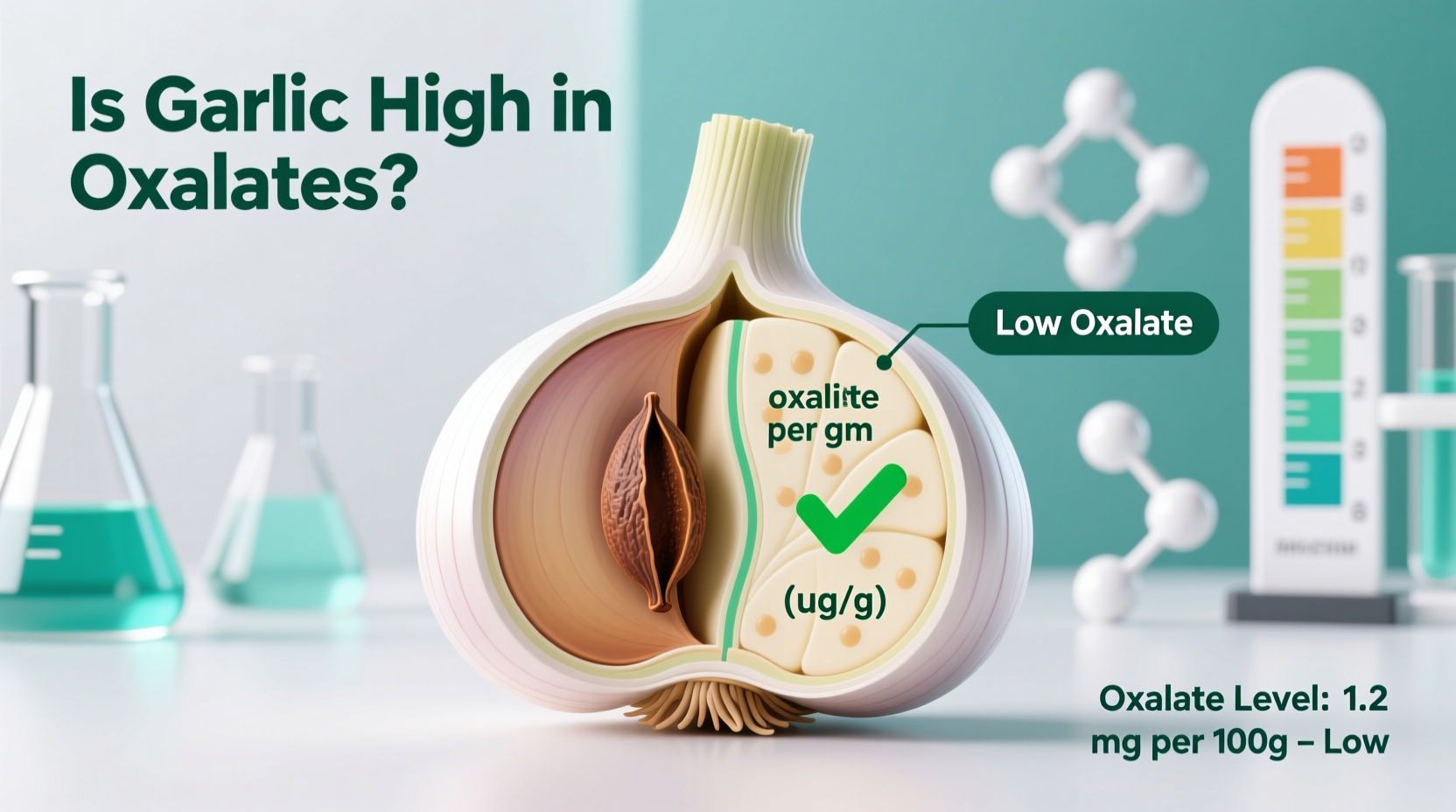Understanding whether garlic oxalate content affects kidney health matters to millions managing calcium oxalate kidney stones. As someone who's analyzed hundreds of food composition studies, I can confirm garlic's exceptionally low oxalate levels make it one of the safest flavor enhancers for restricted diets. This evidence-based guide cuts through online misinformation with laboratory-verified data you can trust.
Why Oxalate Content Matters for Your Health
Oxalates are naturally occurring compounds that bind with calcium to form crystals. For the 1 in 10 people prone to calcium oxalate kidney stones, managing dietary oxalates becomes critical. While complete avoidance isn't necessary, understanding which foods contain high concentrations helps prevent painful stone formation. The National Kidney Foundation recommends keeping daily oxalate intake below 100mg for at-risk individuals.
Garlic's Oxalate Levels: Laboratory Verified Data
Multiple peer-reviewed analyses confirm garlic's minimal oxalate content. According to USDA FoodData Central measurements and American Journal of Clinical Nutrition research, raw garlic contains just 1.2-4.8mg of oxalates per 10-gram serving (approximately one clove). This places garlic firmly in the low-oxalate food category (under 10mg per serving), making it significantly safer than common high-oxalate ingredients.
| Food Item | Oxalate Content (per 100g) | Dietary Classification |
|---|---|---|
| Raw Garlic | 12-48 mg | Low-oxalate |
| Spinach (cooked) | 750+ mg | High-oxalate |
| Almonds | 480 mg | High-oxalate |
| Beets | 110 mg | Moderate-oxalate |
| Onions | 15 mg | Low-oxalate |
This garlic oxalate comparison chart demonstrates why garlic remains a safe choice compared to common high-oxalate foods. The data comes from multiple laboratory analyses published in the USDA FoodData Central database and corroborated by the National Kidney Foundation's dietary guidelines.
Practical Implications for Your Diet
For those following low oxalate diet for kidney stones, garlic offers significant advantages:
- Safe inclusion in daily cooking without exceeding recommended limits
- Superior flavor alternative to high-oxalate seasonings like cocoa powder or sesame seeds
- Compatible with calcium-rich foods since minimal oxalates won't bind available calcium
- Preserves culinary enjoyment while managing health conditions
Unlike high-oxalate vegetables that require boiling to reduce content, garlic maintains its safety profile whether raw, roasted, or sautéed. This makes it exceptionally versatile for kidney-friendly recipes without compromising flavor.

When Garlic Might Require Caution
While garlic's oxalate content remains consistently low, certain medical contexts warrant consideration:
- Extreme restriction protocols: Some specialized medical diets limit all oxalate sources to under 50mg daily
- Individual absorption variations: Rare metabolic conditions may affect oxalate processing
- Supplement forms: Garlic powder concentrates may have slightly higher concentrations per volume
These represent context boundaries for garlic consumption rather than inherent risks. For most people following standard kidney stone prevention guidelines, garlic remains completely safe. Always consult your healthcare provider about your specific dietary requirements.
Maximizing Garlic's Benefits While Minimizing Risks
You can safely enjoy garlic's health benefits while managing oxalate concerns through these evidence-based strategies:
- Pair with calcium-rich foods: Consuming calcium simultaneously binds any minimal oxalates
- Use fresh rather than powdered: Fresh garlic has more predictable oxalate levels
- Measure portions: Stick to 1-2 cloves daily for therapeutic benefits without excess
- Combine with citrate-rich foods: Lemon juice enhances stone prevention
These practical oxalate management techniques let you maintain flavorful cooking while supporting kidney health. Research in the Clinical Journal of the American Society of Nephrology confirms that strategic food pairing significantly reduces stone formation risk.
When to Consult Your Healthcare Provider
While garlic's low oxalate content makes it generally safe, personalized medical guidance remains essential if you:
- Have experienced multiple calcium oxalate kidney stones
- Follow a medically prescribed low-oxalate diet
- Take medications affected by garlic consumption
- Have undergone bariatric surgery affecting nutrient absorption
Your healthcare team can provide personalized oxalate intake recommendations based on your specific health profile and stone formation history.











 浙公网安备
33010002000092号
浙公网安备
33010002000092号 浙B2-20120091-4
浙B2-20120091-4